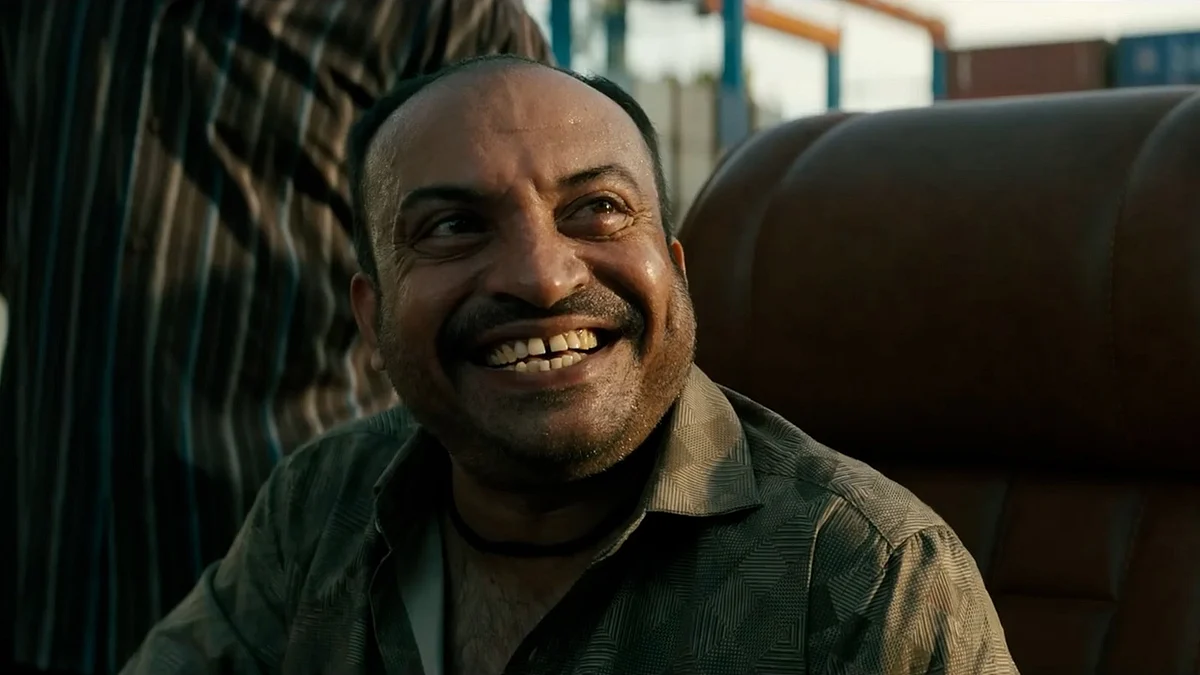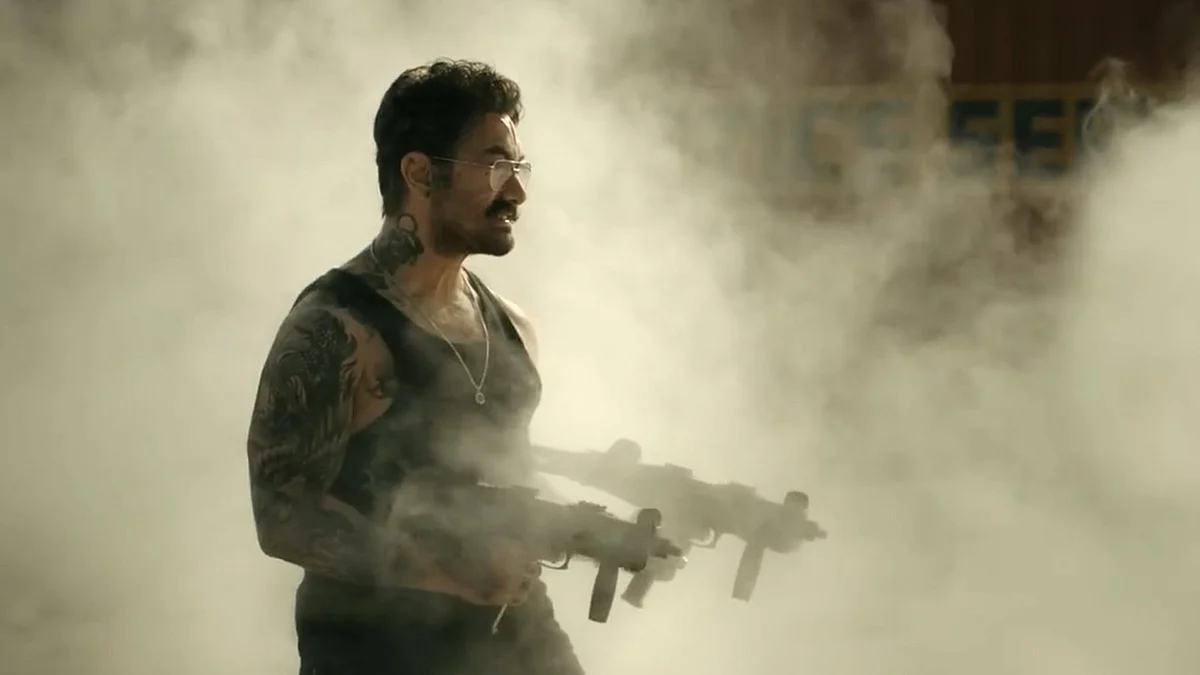Hopes were always riding high for Lokesh Kanagaraj’s Rajinikanth-starrer Coolie. The Tamil release is arguably 2025’s biggest blockbuster title from mainstream Indian cinema.
Superstar-amplifier Lokesh is one of the hottest Indian directors, a fixture on the wishlist of most leading movie stars. After all, who wouldn’t want to be the center of a moody, bloody, hyper-stylised world—propelled by the dosage, the voltage, the entry sequence, the set pieces, the banging Anirudh soundscape, and beyond?
Aside from giving Thalapathy Vijay a number of his biggest hits with Master and Leo, he also reintroduced Kamal Haasan with his crackling 2022 “comeback film” Vikram. Now, with Coolie, he sets his sights on the man whose very name is synonymous with the word ‘superstar—Rajinikanth.
Lokesh’s films thus far have always been built around gloriously violent set pieces and swagger, but they have also been thoughtful about narrative characters and emotional arcs. Coolie, however, more than any of his previous films, lives entirely in service of its mass moments and thrilling high points—with little else in between.
It’s a bloated, breathlessly busy, close to three-hour film that asks you not to think too much about why something is happening or what purpose it serves. Instead, we are asked to simply remain in the moment and refrain from asking too many questions.
It’s the masala-movie equivalent of a horror film that cares only about landing its jump scares, larger narrative be damned. Coolie is, then, a “those five big (incredibly fun) moments” movie—except Lokesh was never merely a five-fun-moments guy.
The Plot
Meet Deva (Rajinikanth), a mysterious man who runs a boys’ hostel. Given it’s a Lokesh film, Deva is an enigma with a violent past—one that will only be revealed to us well into the second half.
When his friend Rajashekar (Sathyaraj) is killed, Deva steps in to investigate what happened and how it links to the head of a criminal empire, named Simon (Nagarjuna creates a sauceless villain), and his right-hand man, Dayal, an excellent Soubin Shahir, who often threatens to steal the film.
With the help of Rajashekhar’s daughter (a shrill Shruti Haasan), Deva (sort of) infiltrates Simon’s operation to uncover the truth about his friend’s, and in the process, bring down the criminal empire.
Nagarjuna in a still from Coolie.
Unintentional Abbas Mustan Territory
Coolie is an oddly-structured, feverishly-fragmented film. Like Vikram, the first half offers a (relatively) straightforward investigation story with Deva uncovering Simon and Dayal’s operation.
The set-piece-heavy second half, however, veers into Abbas-Mustan territory with a barrage of twists—many of which merely cancel each other out.
For example, over the course of just a few scenes, we find out a supporting character is a bad guy who’s actually an undercover good guy, but then actually a bad guy, though ultimately not bad in the way we first thought.
Another character starts out as a seemingly innocent bystander, who turns out to be bad, except they were being blackmailed, so it’s not their fault—except they weren’t being blackmailed, and were, an evil mastermind figure all along.
Spectacularly unexciting performance aside, Nagarajun’s Simon is a poorly established villain. He’s first introduced in a shootout with him presented as the underdog, only to disappear into a blur of montage shots till the final face-off with Deva.
Soubin Shahir’s gloriously menacing Dayal is the far more compelling antagonist, but post-interval, he’s reduced to a textbook bad guy who exists only to be outsmarted by our hero.

Soubin Shahir in a still from Coolie.
The Deva Disconnect
Then there’s the Deva problem: the Rajinikanth character is repeatedly presented as the saviour of labourers and dock workers, who are considered disposable by their evil overlords.
Simon has more than 14,000 labourers working under him, seemingly in need of help—you can see where this is going. Except, aside from a brief flashback sequence, the narrative never presents any sort of opportunity or plot point, or conflict that involves Deva helping them. What’s more, even the way his coloured past unravels feels odd.
The pre-interval scene gives us a typical Baasha moment, which sees Deva down a bottle of whisky, which is supposed to signify that he’s back, and he’s embracing his old violent ways again.
Except nothing really changes. He’s the badass saviour figure before and after this moment; there’s no real tonal shift in his character or arc.
Thankfully, the electric Lokesh-Anbariv combination doesn’t disappoint, giving us a series of thrilling action sequences, that do well to compensate for Rajinikanth’s obvious physical limitations with snazzy camera work and inventive staging.
Aamir Khan’s Disappointing Cameo
As for the hotly anticipated Aamir Khan cameo, all I’ll say is he certainly got the short end of the stick on the glorious Lokesh-cameo front—a real shame.
What a treat it would have been to see a hyper-stylised Aamir, unlike anything we’ve seen before, embracing his inner masala superstar.
Instead, the one person who emerges entirely unscathed from Coolie—and shining brighter than ever—is Anirudh. His smashing score and album usually elevate mass movies, but here, you could argue that Anirudh keeps the film afloat, injecting energy and pounding propulsion when the narrative can’t.

Aamir Khan in a still from Coolie.
In the end, Coolie is a series of glorious, high voltage sequences—the Monica song sequence, a hostel assault, and a thrilling flashback sequence of young Deva massacring an army of thugs.
Outside of these, Coolie made me yearn for a simpler Lokesh story: a cleaner, less cluttered Kaithi or Kill-like narrative which involves one giant, focused, escalating set piece, rather than an overstuffed armada of characters, plots, and subplots. Here, the more you think about the film, the less that seems to add up.
(Suchin Mehrotra is a critic and film journalist who covers Indian cinema for a range of publications. He’s also the host of The Streaming Show podcast on his own YouTube channel. This is an opinion piece, and the views expressed above are the author’s own. The Quint neither endorses nor is responsible for the same.)
www.thequint.com (Article Sourced Website)
#Rajinikanths #Coolie #Lives #Service #Mass #Moments
